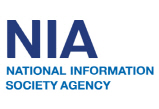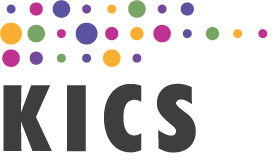Now 861 visitors
Today:351 Yesterday:913
Total: 4136
404S 103P 85R
2026-01-07, Week 2 |
| Member Login |
| Welcome Message |
| Statistics |
| Committee |
| TACT Journal Homepage |
| Call for Paper |
| Paper Submission |
| Find My Paper |
| Author Homepage |
| Paper Procedure |
| FAQ |
| Registration / Invoice |
| Paper Archives |
| Outstanding Papers |
| Author Homepage |
| - Paper Procedure |
| - Journal Procedure |
| - Presentation Tips |
|
| Proceedings |
| Program with Papers |
| Plenary Session |
| Tutorial Session |
|
| Presentation Assistant |
| Hotel & Travel Info |
| About Korea |
| Accommodation |
| Transportation |
| VISA |
| Other Infomation |
|
| Photo Gallery |
| Scheduler Login |
| Seminar |
| Archives Login |
|
| Sponsors |

|

|

|

|

|

|

|

|

|

|

|

|
|
|
|
|
|
2009
 |
Title : Issues and R&D Direction of Future Internet : The “Future Internet” and the future of “the Internet” |
|
Time : Feb, 15, 2009, 16:00 ~ 18:00 |
|
Speaker : Hiroshi ESAKI, Ph.D.
Professor, Graduate School of Information Science and Technology,
The University of Tokyo
Abstract : The professional Internet system has operated more than 20 years, while preserving the continuous introduction of technical innovations. There are many discussions on “future internet” or “post internet architecture”. In this talk, the speaker tries to identify the issues and R&D direction of future internet. The internet architecture is different from the particular protocol suites, such as existing TCP/IP. TCP/IP itself has experienced a lot of protocol modifications and functional enhancements, during the deployment of global Internet system. We must recognize that the internet architecture is the “logical” architectural framework, not the particular protocol sets nor routers and switches. The internet architecture, of course including the future internet must preserve the following five essential feature of the internet architecture. These are (1) autonomous, (2) distributed, (3) disconnected, (4) inter-domain, and (5) global. The Internet system has been challenged by the following three aspects; global, ubiquitous and mobility.
ISOC, Internet Society (www.isoc.org), has initiated the strategic initiative that is focusing on the “Trust and Identifier”. In this talk, the speaker tries to role out the particular research direction around the “Trust and Identifier”, with his understanding.
We must re-design identifier, directory service, trust model, routing and communication model for the computer system and computer network. For example, DTN(Delay Tolerant Networking) or Peer-to-Peer system architecture would challenge the introduction of new technological framework to the Internet. Finally, the speaker discusses how to build and to deploy the future internet infrastructure, and the importance of testbed.
Biographical Sketch
He received the B.E. and M.E. degrees from Kyushu University, Fukuoka, Japan, in 1985 and 1987, respectively. And, he received Ph.D from University of Tokyo, Japan, in 1998. In 1987, he joined Research and Development Center, Toshiba Corporation, where he engaged in the research of ATM systems. From 1990 to 1991, he has been at Applied Research Laboratory of Bellcore Inc., New Jersey (USA), as a residential researcher. From 1994 to 1996, he has been at CTR (Center for Telecommunication Research) of Columbia University in New York (USA). During his staying at Columbia University, he has proposed the CSR architecture, that is the origin of MPLS(Multi-Protocol Label Switching), to the IETF and to the ATM Forum. From 1996 to 1998, he has conducted the CSR project in Toshiba, as a chief architect. From 1998, he has served as a professor at the University of Tokyo, and as a board member of WIDE Project (www.wide.ad.jp). From 1997, he has involved in the IPv6 research and development at the WIDE project. Regarding the research/development/deployment for the IPv6, he has been very tightly and closely working with Prof.Jun Murai, who had served as a political and technical advisor for the Japanese cabinet. He is an executive director of IPv6 promotion council, which is cross ministry and cross industry council to promote the IPv6 technology. He has been responsible on the design and operation of JGN (Japan Gigabit Network) IPv6 network, since 2000. He is an vice chair of JPNIC (Japan Network Information Center), since 2006, and has served as an IPv6 Forum Fellow. From 2006, he serves as BoT(Board of Trustee) for ISOC (Internet Society).
|
 |
Title : GMPLS networks and optical network testbeds |
|
Time : Feb, 15, 2009, 16:00 ~ 18:00 |
|
Speaker : Malathi Veeraraghavan
University of Virginia
Abstract : This tutorial combines a top-down approach, starting with applications for circuit/virtualcircuit
(GMPLS) networks, with a bottom-up understanding of the GMPLS data-plane and
control-plane protocols. Since the early nineties, significant investment has been made in
developing protocols for high-speed circuit-switched and virtual-circuit networks. The goal of
the tutorial is to offer attendees an opportunity to not only learn the basic technological
aspects, but also to understand opportunities for how we can enable a successful wide-scale
deployment of GMPLS networks. Finally, the tutorial describes actual deployments of
GMPLS networks, most of which are research testbeds for Grid computing and eScience
projects. The presenter has personal experience in deploying such a research testbed, which is
a wide-area network called CHEETAH.
Biographical Sketch
Malathi Veeraraghavan is a Professor in the Charles L. Brown Department of Electrical &
Computer Engineering at the University of Virginia. She served as Director of Computer
Engineering from 2003-2006. Dr. Veeraraghavan received her BTech degree from Indian
Institute of Technology (Madras) in 1984, and MS and PhD degrees from Duke University in
1985 and 1988, respectively. After a ten-year career at Bell Laboratories, she served on the
faculty at Polytechnic University, Brooklyn, New York from 1999-2002. Her research work
on optical networks is supported by NSF and DOE. She holds twenty-nine patents and has
received five Best-Paper awards. She served as an Associate Editor for IEEE/ACM
Transactions on Networking from 2006-2008, and as Technical Program Chair for IEEE
ICC2002.
|
|
|
|
|
ⓒ Copyright 1999. ICACT (ISSN 1738-9445) & Global IT Research Institute(GiRI) All rights Reserved. Contact: office (at) icact . org Tel:+82-70-4146-4991
|
1713 Obelisk, 216 Seohyunno, Bundang-gu, Sungnam Kyunggi-do, Republic of Korea 13591
Business License Number : 220-82-07506, President: Thomas ByeongNam Yoon Ph.D. |
|
(13591)경기도 성남시 분당구 서현로 216 오벨리스크 1713호
(사)글로벌IT연구회 사업자등록번호 : 220-82-07506 대표자 : 윤병남
|
|
| |






